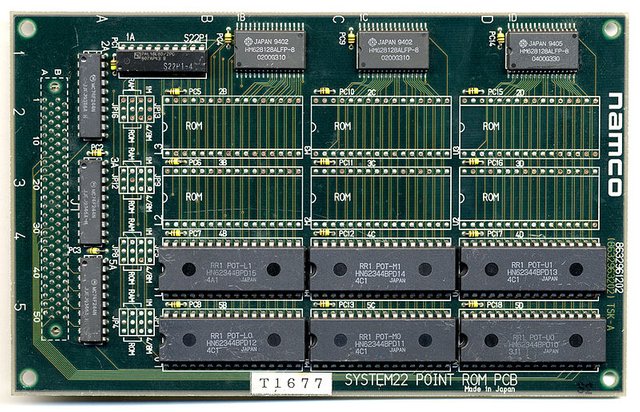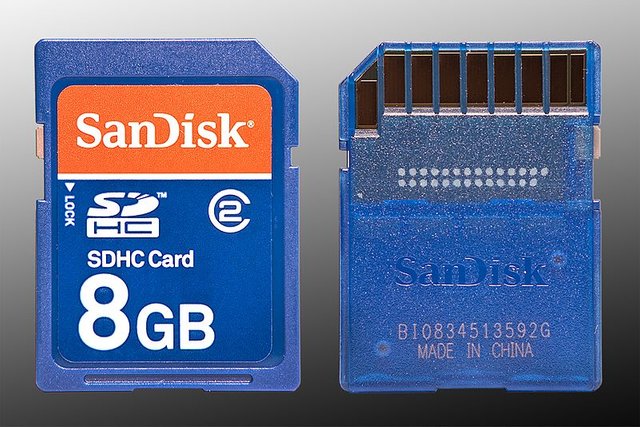System on Chips: how the memory on your smartphone operate.
Good day steemians. I believe that all is well with everyone.
Thanks for always stopping by to read from my blog and.
I actually find it necessary to appreciate all who makes my stay here interesting.
You know that I have been writing on system on Chips (SoC) for some time now. Honestly, the chips has been the backbone of today's telecommunication gadgets ranging from our iPhones, iPad video encoder and decoder e.t.c. Current technology advancement has employed the use of SoC to make communication and internet surfing easier and better. It has also improved social life of many thereby making us to see life outside limitations.
Can we move from where we stopped? Okay. In last post, I briefly discussed several component planted on the system on Chips which are embedded on our smart phones and tablets. In this post, I will take us through a deep explanation of a major component. Stay cool as we proceed.
Memory:
I believe we all know that memory on a computing system is required for optimum operation of the system. Without the memory, the function of our Processor will not be visible , because it's the memory that retains the information processed by our central processing unit on our computer and even our smartphones and iPad. The memory is the means by which our computing system retains it's processed information. So how does memory operates on our system on Chips placed inside smartphones and iPad. Let's check it out.
We have volatile memory and non-volatile memory
The volatile memory is just as the name given to it. It's a temporary memory unit of the system. It's on this memory that whatever process initiated is completed ; can you imagine a piece of paper where you start the calculation of your mathematics? The volatile memory provides platform for the processor on iPhones. After the processor is through with the volatile memory, the end result of the process leads to the other memory refers to as Non- volatile memory with acronym NVM.
The system on Chips technology in our iPhones contains (although maker dependent and the version of the smartphone) the volatile memory on the processor for fast or quick processing of application. For your smartphones to be quick in processing and giving you desired result without delaying you, the volatile memory must be at close proximity to the processor; the reason been that the closer the processor to the memory, the faster the processing of processor. This is why manufacturers now placed the volatile memory on the chip for quick processing. This memory on the chip is called cache. Alot of SoC's permit arbitrary access to this cache that is the memory and that memory is what is popularly known as Random Access Memory with acronym RAM. This is one major component that makes your smartphones costly because it comes with high cost.
6t-SRAM cell:By Abelsson - Own work, CC BY-SA 3.0,
The rudimentary cell which store a unit bit information in this RAM called cache is recognize as 6-T cell because it is made up of 6 transistor joined in a way as seen above. The above is known as Static Random Access Memory (SRAM). The flow of voltage that contain amount of bit through the junction is same and didn't change throughout and that is how it got it name.
Technology advancement which leads to integration of some computing processor together is employed in manufacturing system on Chips such that classes of RAM called caches are integrated together to improve the performance of the caches on the chip.
RAM of a smartphone:By Cmuelle8 - Own work, CC0,
The picture shown above reveals a Random Access Memory (ARMv7) embedded on the SoC of a smartphone.The three levels cache are all joined together on the SoC so that we can have an instantaneous access to the information been processed by the processor of our iPhones.
Let's now check the Non-volatile Memory.
This is the direct opposite of the volatile memory. It's retain information for a long time. It's the memory on either our personal computer or our iPhones that allow us to have our preserved information back even when we just turned our system on. It's the reason data stored can still be accessed and not erased. Read only memory s a good example of this Non-volatile Memory. Most of our external memory hardware are good example of Non-volatile Memory like the hard disk and many others. This type of memory for it to store every unit of bit, the following part to be discussed is taken.
The Random Access memory provide space to store information, and it's refers to as the internal storage. It's highly important for the smartphone usefulness. The operating system installed on your smartphone and the phone itself say alot about the number of storage chips that will be embedded on the device. The embedded chips, depending on the purpose of the phone is subdivided to many division for purposes intended to serve, for example, purpose for system files, application storage, and cache. Read Only Memory is the apportioned part of the chip that act as storage site for the system files. Also system updating can improve the memory too not only when you do so on your device.

Read only Memory: By Yaca2671 - Own work, CC BY-SA 3.0,
Some smartphone makers have set up several Read only memory for an effective storage capacity. Take for instance, one of the ROM maybe smaller in size but very fast in action and housed the primary system files, the cache data on another partition, the application data also on a separate partition. Whereas, the other chip which is larger in storage size compare to the first may be time-consuming but provide space for application to be stored on the device.
A large memory ROM for quick accessibility at times can be on high cost to be put in place by the manufacturer, so the manufacturer reduces the size to give room for operating system and embed a cost effective storage.
Some manufacturers may put only one storage chip in between where supposed two chips supposed to be where several chips is used. In such case, you will be informed by the manufacturer that the phone is actually a particular capacity, for example, 16GB capacity storage, in this case, after some have been been used for system partitioned, say 1-2 GB , and another portion dedicated for application partition, you may end up having access to half of the acclaimed internal storage capacity.
Now to compare internal storage chips with popular external memory card, their performance is quite different. The internal memory is embedded by soldering to the board of the iPhone and the iPad so that it can directly relate with the SoC of the device, and this eventually gives the operation on the device a good speed.
At times, when manufacturers want to maximize profits, they will not place internal storage that can be readily available to be use on the device board, what they rather do is to securely install a external memory card in a slot very difficult to be seen by the you.
Let's briefly take a peep at the removable storage:
Something amazing I want to clarify here is that the removable storage popularly known as external memory card is actually an internal storage card. Simply because it's removable from our device doesn't mean it's external.
Recently, smartphones which normally contain detachable storage space for microSD cards,now have space for macro sized SD card.

A typical SDcard:By Asim18 - Own work, CC BY-SA 3.0,
From all the main operating system employed by smartphone manufacturers, Android is known to permit use of extractable storage. Apple only give room for enough storage space on their products.
SUMMARY
Memory on a computing system is required for optimum operation of the system.
It's the memory that retains the information processed by our central processing unit on our computer and even our smartphones and iPad.
The two types of memory discussed are volatile memory and non-volatile memory.
The volatile memory provide platform for the processor on the iPhones. After the processor is through with the volatile memory, the end result of the process leads to the other memory refers to as Non- volatile memory with acronym NVM.
Non-volatile Memory is the direct opposite of the volatile memory. It's retain information for a long time.
Thanks for your time. Please do leave a comment if you find this post interesting.
REFERENCES
Types-of-memories-in-computing-system-on-chips
Congratulations! This post has been upvoted from the communal account, @minnowsupport, by Steepup from the Minnow Support Project. It's a witness project run by aggroed, ausbitbank, teamsteem, theprophet0, someguy123, neoxian, followbtcnews, and netuoso. The goal is to help Steemit grow by supporting Minnows. Please find us at the Peace, Abundance, and Liberty Network (PALnet) Discord Channel. It's a completely public and open space to all members of the Steemit community who voluntarily choose to be there.
If you would like to delegate to the Minnow Support Project you can do so by clicking on the following links: 50SP, 100SP, 250SP, 500SP, 1000SP, 5000SP.
Be sure to leave at least 50SP undelegated on your account.